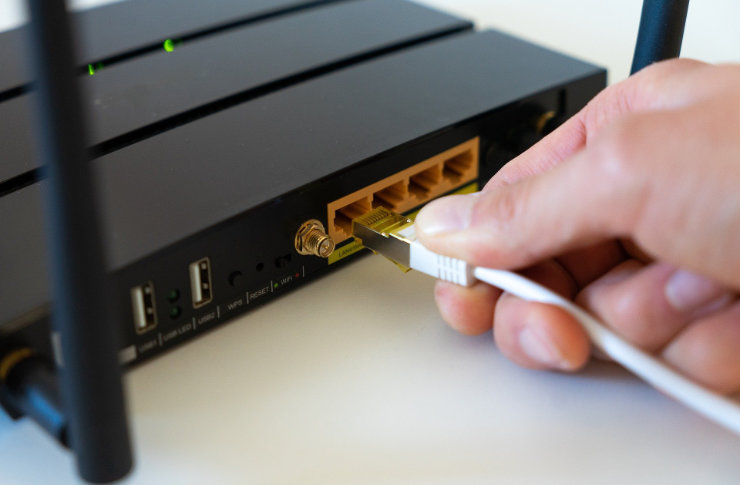Cable and Internet Plans for Seniors: Finding Affordable and Easy-to-Use Alternatives
As the digital world continues to expand, staying connected becomes increasingly important for seniors who want to maintain relationships, access healthcare services, manage finances, and enjoy entertainment options. Finding the right cable and internet bundle can feel overwhelming, especially when balancing affordability with ease of use. Many providers now offer specialized plans designed specifically for older adults, featuring simplified equipment, dedicated customer support, and competitive pricing structures that make technology more accessible than ever before.

Understanding Connectivity Needs for Seniors
Senior connectivity requirements often differ significantly from younger demographics, focusing primarily on reliability, simplicity, and essential services rather than high-speed gaming or extensive streaming capabilities. Most seniors prioritize stable internet connections for video calls with family, basic web browsing, email communication, and streaming their favorite television programs. Understanding these specific needs helps narrow down the overwhelming array of available options to focus on plans that deliver consistent performance without unnecessary features that increase costs.
Internet speeds between 25-50 Mbps typically provide adequate performance for most senior households, supporting multiple devices simultaneously while maintaining reliable connections for video calls and streaming services. Cable television preferences often lean toward comprehensive channel packages that include news, weather, classic programming, and local channels, making bundled services particularly attractive for this demographic.
Choosing the Right Internet Plan and Selecting Cable or Streaming Services
Internet plan selection should prioritize consistent speeds over maximum bandwidth, as seniors typically value reliability more than peak performance capabilities. Fixed-speed plans often work better than variable-speed options, providing predictable service levels that support daily activities without frustrating slowdowns during peak usage periods. Many providers offer senior-specific internet plans with reduced speeds but lower monthly costs, making connectivity more affordable for those on fixed incomes.
Cable services continue to appeal to seniors who prefer traditional television viewing experiences, though streaming alternatives are gaining popularity as more older adults become comfortable with digital platforms. Hybrid approaches combining basic cable packages with popular streaming services like Netflix or Amazon Prime often provide comprehensive entertainment options while maintaining familiar viewing methods. Equipment simplicity becomes crucial, with unified remote controls and straightforward channel guides significantly improving the user experience.
Tips for Seniors to Maximize Technology
Technology optimization for seniors focuses on simplifying interfaces, organizing frequently used features, and establishing reliable support systems for troubleshooting common issues. Setting up devices with larger text displays, simplified menu structures, and clearly labeled remote controls can dramatically improve daily usage experiences. Many modern cable boxes and internet routers offer accessibility features specifically designed for older users, including voice commands and simplified navigation systems.
Creating written guides for common tasks like accessing favorite channels, adjusting volume settings, or connecting to Wi-Fi networks helps maintain independence when minor technical issues arise. Regular software updates and security maintenance ensure optimal performance while protecting personal information from potential threats. Establishing relationships with tech-savvy family members or friends provides additional support when more complex issues require assistance.
Customer Support and Service Considerations
Quality customer support becomes particularly important for seniors who may need additional assistance with installation, troubleshooting, or service changes. Providers offering dedicated senior support lines, extended phone hours, and patient technical assistance create more positive experiences for older customers. In-home installation and setup services eliminate the complexity of equipment configuration, ensuring everything works properly from the start.
Many companies now provide specialized senior customer service representatives trained to communicate technical information clearly and patiently. Some providers offer simplified billing systems, automatic payment options, and protection against unexpected charges, addressing common concerns among older adults managing their telecommunications expenses.
| Provider | Bundle Type | Monthly Cost Estimate | Key Features |
|---|---|---|---|
| Xfinity | Internet + Basic Cable | $60-80 | Senior discounts available, simplified remote |
| Spectrum | Internet + TV Select | $70-90 | No annual contracts, free installation |
| AT&T | Internet + TV | $65-85 | Senior customer support line |
| Verizon Fios | Internet + TV | $75-95 | Reliable fiber connection, HD channels |
Prices, rates, or cost estimates mentioned in this article are based on the latest available information but may change over time. Independent research is advised before making financial decisions.
Geographic location significantly impacts available providers and pricing structures, with rural areas often having fewer options but potentially qualifying for government assistance programs. Many providers offer promotional pricing for new customers, though seniors should carefully review contract terms and understand pricing changes after promotional periods end.
Staying Connected and Informed
Maintaining connectivity in today’s digital landscape requires balancing technological capabilities with practical needs and financial considerations. Seniors benefit most from choosing providers and plans that prioritize customer service, reliability, and straightforward pricing structures over complex feature sets they may never use. Regular plan reviews ensure services continue meeting changing needs while identifying opportunities for cost savings or service improvements. The key lies in finding solutions that enhance daily life without creating unnecessary complexity or financial strain, allowing older adults to enjoy the benefits of modern connectivity while maintaining their independence and peace of mind.




